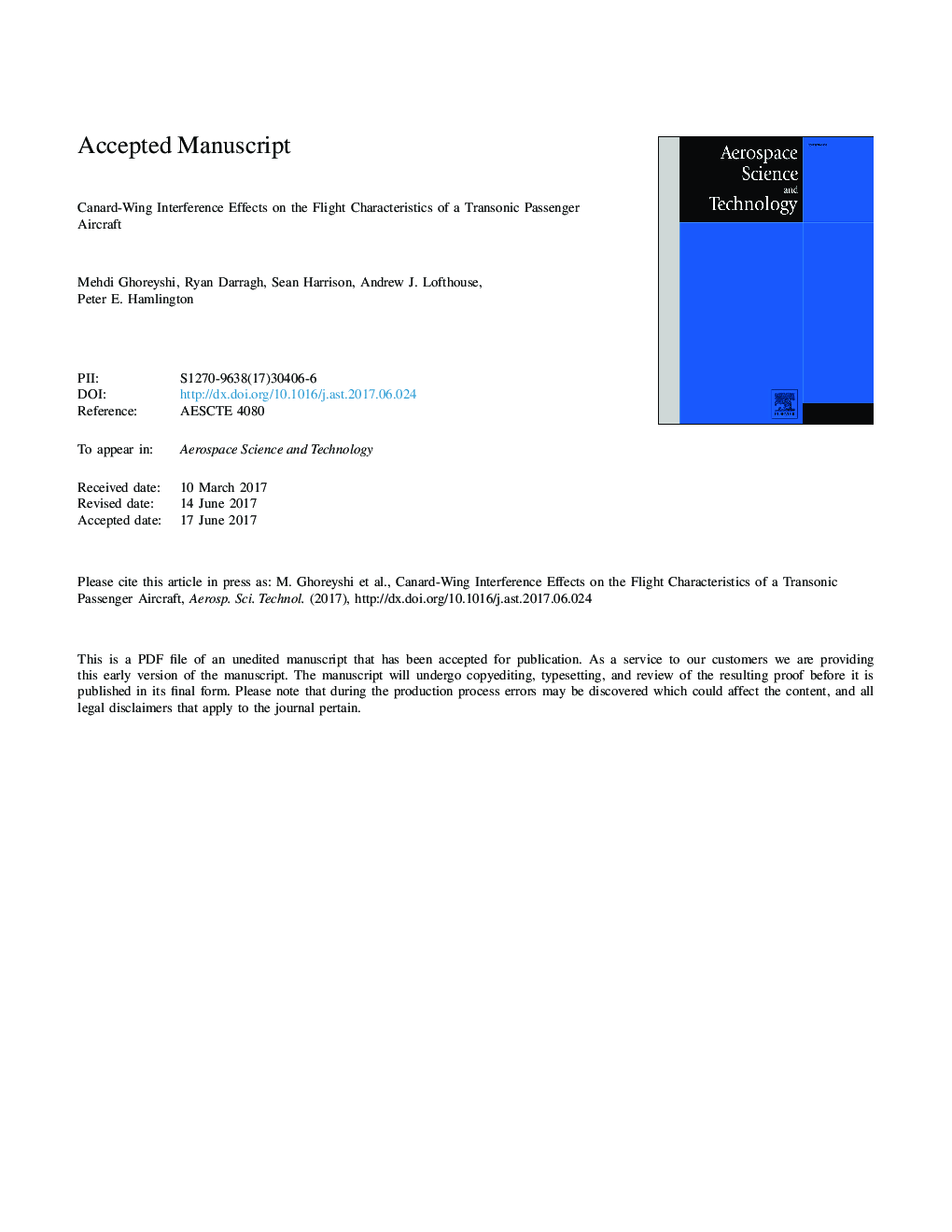| کد مقاله | کد نشریه | سال انتشار | مقاله انگلیسی | نسخه تمام متن |
|---|---|---|---|---|
| 5472744 | 1520065 | 2017 | 30 صفحه PDF | دانلود رایگان |
عنوان انگلیسی مقاله ISI
Canard-wing interference effects on the flight characteristics of a transonic passenger aircraft
دانلود مقاله + سفارش ترجمه
دانلود مقاله ISI انگلیسی
رایگان برای ایرانیان
موضوعات مرتبط
مهندسی و علوم پایه
سایر رشته های مهندسی
مهندسی هوافضا
پیش نمایش صفحه اول مقاله

چکیده انگلیسی
Effects of canard-wing interference on the flight characteristics of a civilian transonic cruiser aircraft are examined using computational fluid dynamics (CFD) simulations, a vortex lattice solver, and wind tunnel measurements. These data sources are used to generate reduced-order aerodynamic models in the form of look-up tables that give longitudinal and lateral force and moment coefficients for different combinations of angle of attack, Mach number, side-slip angle, and canard deflection angle. Flight characteristics from CFD simulations and the vortex lattice solver are compared with wind tunnel measurements in order to determine model accuracy for both static and dynamic flight conditions. Static cases are examined at a Mach number of 0.1 for two different canard positions using an overset grid approach. Cases considered include canard deflections of â30â, â10â, 0â, and 10â at angles of attack ranging from â4â to 30â and for sideslip angles of â6â and 6â. Dynamic cases are examined for aircraft oscillations about mean angles of attack of 0â to 10â, with a motion frequency of 1 Hz and an amplitude of 0.5â. The results indicate that both static and dynamic aerodynamic predictions from CFD simulations are in good agreement with experiments over the range of conditions considered. The vortex lattice solver, by contrast, cannot predict vortical flows formed over the wing and canard surfaces, resulting in poorer agreement with experimental data. The CFD-based reduced order aerodynamic model is then used to investigate trim settings and handling qualities of two different canard designs. Results show that positioning the canard surface of the transonic cruiser closer to the wing requires less canard deflection and thrust force to trim the aircraft.
ناشر
Database: Elsevier - ScienceDirect (ساینس دایرکت)
Journal: Aerospace Science and Technology - Volume 69, October 2017, Pages 342-356
Journal: Aerospace Science and Technology - Volume 69, October 2017, Pages 342-356
نویسندگان
Mehdi Ghoreyshi, Ryan Darragh, Sean Harrison, Andrew J. Lofthouse, Peter E. Hamlington,